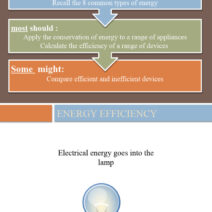The concept of sustainability extends far beyond mere environmental considerations; it encompasses a vital intersection between energy conservation and the responsible use of resources. This intricate relationship forms the cornerstone of what is often referred to as the science of sustainability. As our global population burgeons and the consequences of climate change become increasingly dire, the pressing query emerges: how can we effectively conserve energy and matter in our quest for a sustainable future?
To answer this, we must first understand the multifaceted definitions of energy and matter within the context of sustainability. Energy, in its various forms—be it thermal, electrical, chemical, or kinetic—is the catalyst for virtually every function and process on our planet. Matter, consisting of the physical substances that make up our world, is equally paramount. The interplay between these two elements is crucial. Every action, whether direct or indirect, has an energy cost and a material implication.
One of the predominant observations in today’s society is the paradox of modern convenience juxtaposed with inefficiency. In a world where technology ostensibly makes life easier, it often simultaneously escalates our energy consumption. This observation leads to a deeper comprehension of our innate fascination with sustainability. The mere act of conserving energy and matter necessitates a multifaceted approach, weaving through technological, social, and economic threads.
Energy Efficiency: The Low-Hanging Fruit
One of the most straightforward avenues for conserving energy is through enhanced efficiency. Energy-efficient appliances, for instance, are engineered to utilize significantly less energy than their conventional counterparts. The science behind this efficiency often hinges on advanced technologies such as variable speed motors, high-efficiency heating elements, and sophisticated electronics that optimize energy usage. By switching to energy-rated appliances, households can dramatically reduce their energy footprint while averting higher costs—a clear win-win scenario.
Moreover, the architecture of our living spaces plays a crucial role in energy conservation. Passive design strategies, such as maximizing natural light, utilizing thermal mass, and optimizing ventilation, can help maintain comfortable temperatures without the constant reliance on heating and cooling systems. Such approaches not only conserve energy but also foster healthier indoor environments.
Harnessing Renewable Energy
Transitioning from fossil fuels to renewable energy sources stands as a cornerstone of true sustainability. Renewable technologies—solar, wind, hydro, and geothermal—are intrinsically sustainable as they harness naturally occurring processes that are renewed continuously. Investing in solar panels or wind turbines can reduce reliance on depleting energy sources, significantly lowering greenhouse gas emissions associated with traditional energy production.
Additionally, decentralized energy generation allows communities to produce power locally, enhancing energy security and reducing transmission losses. By integrating renewable energy systems into the local grid, communities can promote resilience against economic fluctuations and environmental challenges.
Water and Matter Conservation
An often-overlooked aspect of energy conservation relates to water usage. Water treatment and distribution systems demand considerable energy input. Furthermore, the extraction and processing of materials—whether for agriculture, manufacturing, or energy production—consume vast amounts of water, thereby straining both energy resources and water supplies. Strategies to utilize water more efficiently—including rainwater harvesting systems, graywater recycling, and xeriscaping—benefit both energy and matter conservation efforts.
The Power of Behavioral Change
While technological advancements play a crucial role, the role of individual and collective behavior in energy conservation cannot be overstated. Behavioral economics offers insight into the psychological tendencies that influence our consumption patterns. Simple changes, such as turning off lights when leaving a room or unplugging electronics not in use, can lead to substantial energy savings when adopted collectively. Creating awareness and cultural shifts towards sustainable practices is essential for fostering long-term change.
Incorporating sustainability into educational frameworks also empowers future generations to embrace conscientious consumption habits. By instilling values of environmental stewardship in our youth, society can cultivate a culture that prioritizes sustainability by default.
Circular Economy: Redefining Waste
In a world driven by consumerism, reimagining our approach to waste stands as a critical facet of conserving matter. The circular economy concept advocates for closed-loop systems where waste is reduced, reused, and recycled rather than discarded. By minimizing resource extraction and maximizing the lifecycle of products, we can fundamentally alter the trajectory of our consumption habits and consequently reduce the energy costs associated with production and waste management.
This transformation requires systematic shifts in industry practices, consumer behaviors, and policy frameworks. From eco-design to regulatory reforms, a coordinated effort is necessary to incentivize sustainable practices at all levels of the economy.
The Role of Policy and Legislation
Policy interventions play a pivotal role in the path toward sustainability. Governments can enact regulations that promote energy efficiency, emissions reduction targets, and resource conservation incentives. Implementing carbon pricing mechanisms, enhancing building codes, and investing in sustainable infrastructure are just a few examples of how policy can drive collective engagement towards sustainability. Clear guidelines and incentives will galvanize both consumers and businesses to align with overarching sustainability goals.
Each individual has a complicit role in fostering a sustainable future. By recognizing the intricate connections between energy, matter, and sustainability, one can comprehend the weight of their choices. It is not merely about conserving energy in isolation; rather, it encompasses a holistic understanding of the ecosystems we inhabit. Through a composite of innovative solutions, societal behavior adjustments, and robust policies, the intricate puzzle of sustainability can be approached with greater efficacy. The scientific principles that govern these interactions serve not just as guidelines, but as a clarion call for action. Embracing the philosophy of sustainability requires more than acknowledgment; it demands a commitment to preserving the delicate balance of our planet’s energy and matter—a debt owed to future generations and our shared home on Earth.







